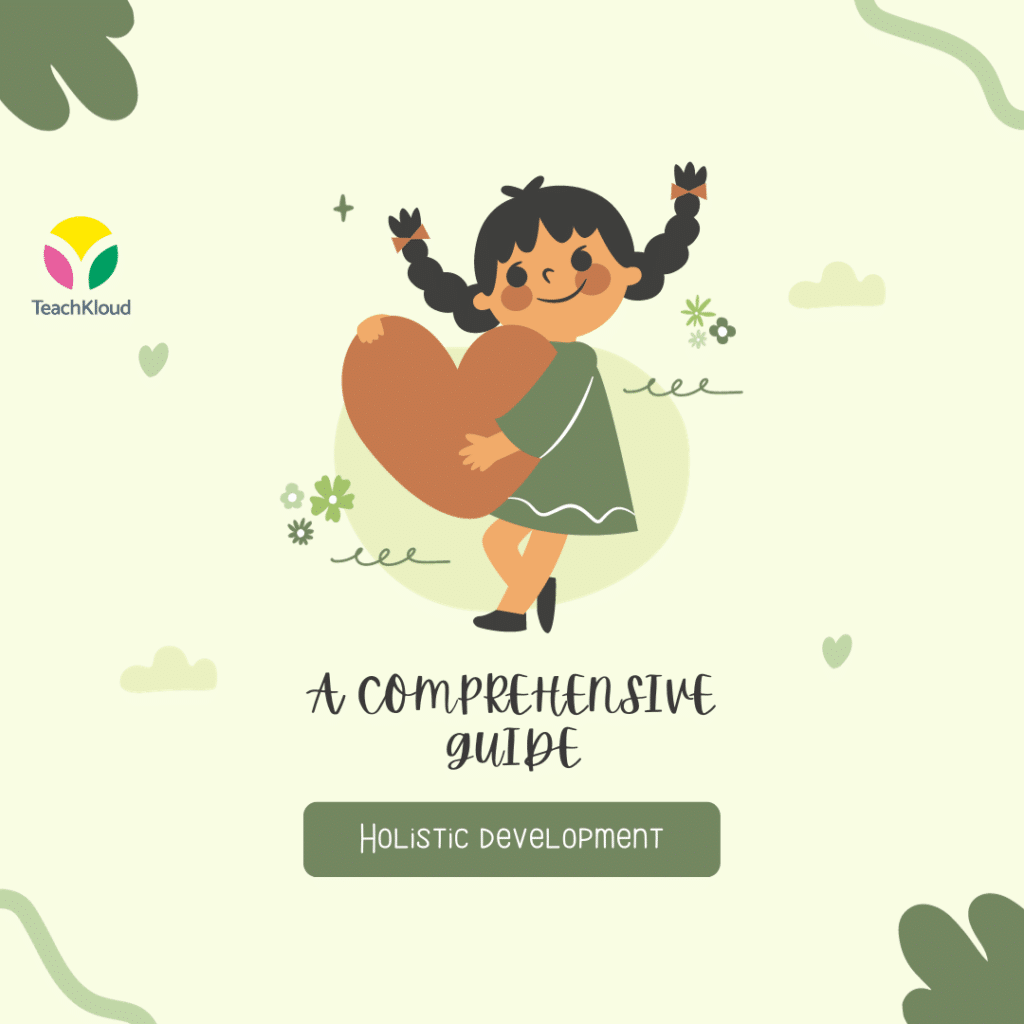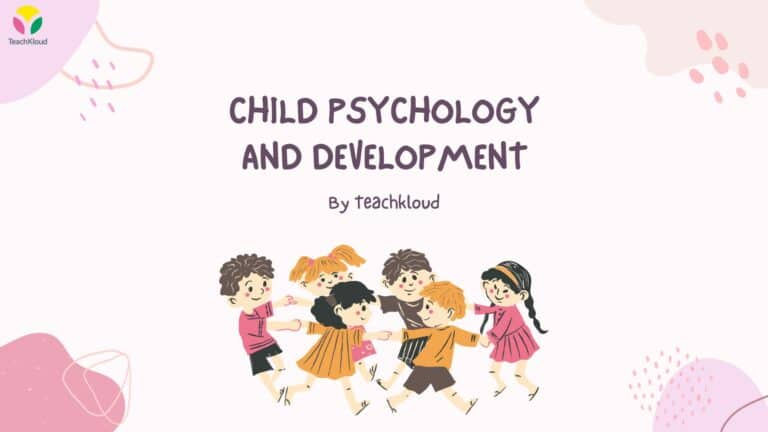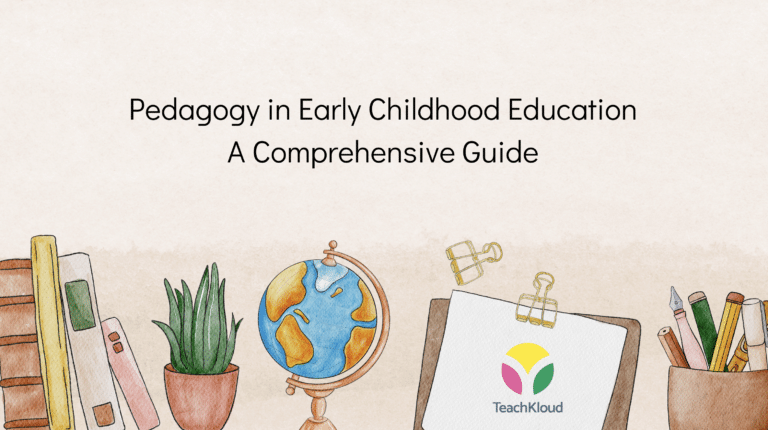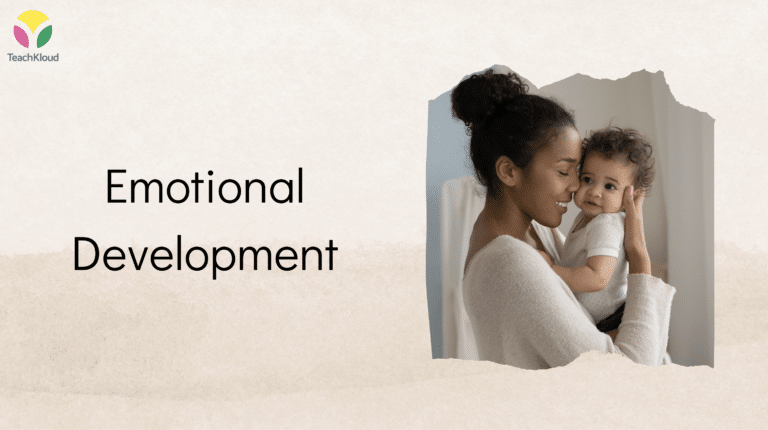Understanding Holistic Development: A Comprehensive Overview
When speaking of holistic development, imagine it as a multi-layered approach that nurtures and helps early childhood learners thrive in every aspect of their lives. This approach doesn’t solely focus on one area but rather places emphasis on the overall growth of the child. This comprehensive approach views the child as a whole person and guides their development in all areas, including physical, mental, emotional, social, and spiritual realms.
A great way to visualise holistic development, is by picturing a blossom slowly unfurling each petal. In the same way, a child gradually unfolds their full potential in every aspect of their existence – their body grows stronger, their mind becomes more resilient, their emotions more stable, and their social connections more rich and meaningful. It’s not just about teaching the ABC’s and 123’s but more about helping the child discover and comprehend the world in their own unique way.
In essence, the concept of holistic development advocates for the interconnectivity of these multiple facets and acknowledges that a child’s development is not a compartmentalised process, but an interconnected web of growth. With this holistic framework, every aspect of the child’s life is considered important and interconnected in ways we may not immediately realise.
This might sound like a big responsibility to bear, but the importance of this holistic approach to early childhood development is truly remarkable. It forms the very foundations upon which the layers of a child’s life will be built.
All the developmental domains of a child – be it cognitive, physical, emotional or social, are interlinked and influence one another. Hence, a holistic developmental approach ensures the nurturing of every domain, providing the child with tools and experiences that help them develop in sync with their peers, and at their own pace.
So how do we actually implement this holistic approach in early childhood? It boils down to truly engaging with the child, observing their interests, responding to their needs, and setting up an environment conducive to their growth. It’s about recognising the individual character of each child, and fostering healthy relationships amongst peers, families, and the community.
With a guided, well-structured, and holistic approach, early childhood development has the power to mould, shape, and direct the life of a child in all its magnificence. It’s not about ‘filling a bucket’ with knowledge, but ‘igniting a fire’ for lifelong learning.
The Emergent Curriculum: Moving from Theory to Practice – Watch our video masterclass with a professional development certificate here
The Importance of Holistic Development in Early Childhood
“Children are not things to be molded, but are people to be unfolded.” ~ Jess Lair
The essence of this quote outlines the very core of holistic development in early childhood. Emphasising the individual strengths and interests of a child, this approach nurtures them into well-rounded adults infused with a deep sense of self-awareness. So, why is holistic development in education, especially in early childhood education and care, so important? Holistic development is vital to children’s overall development because
it encompasses the child’s total development, taking into account their cognitive, physical, emotional, social and language growth. Let’s delve deeper into why this approach can make a pivotal difference in children’s lives.
The Holistic Approach: More than Just Academics
Traditional education models focus primarily on cognitive development, promoting knowledge retention and academic skills. A holistic approach, conversely, views the child as a whole entity, ensuring that their emotional, social and physical development isn’t overshadowed by academics.
This form of learning design recognises that children develop at their own pace in different areas. By nurturing individual growth areas rather than prescribing a one-size-fits-all curriculum, it allows children to explore and learn in their distinct personal manner.
Nurturing a Healthy Well-being
With a broad spectrum coverage of a child’s growth sectors, holistic development fosters physical health, emotional stability, and social skills, alongside cognitive abilities. Maintaining a balance among these domains contributes to children’s overall well-being and self-esteem, an invaluable cornerstone for adult life.
Emphasising Values and Ethics
Another noteworthy virtue of the holistic scheme is the importance it places on values and ethics. Children learn beyond educational boundaries, becoming proficient in respecting others, showing empathy, and understanding the difference between right and wrong; real-life skills rarely encapsulated in conventional methods of teaching.
Creating Stronger Connection with Environment
Holistic development encourages children to be aware of their environment and to build a relationship with the world around them. This understanding and appreciation of nature and the wider world help to develop responsible attitudes and shape well-rounded adults.
This connection goes far beyond mere understanding. It’s about fostering in children an appreciation of the world’s complexities and beauties. Holistic development helps children comprehend that they are an integral part in the grand scheme of things, hence, cultivating a sense of responsibility towards preserving our planet.
From an early age, they learn to respect the interconnectedness of all life forms, recognising that every action has consequences – some good, others not so. For instance, they start understanding that littering can harm the environment, which in turn can affect plants, animals, and ultimately, us. This consciousness helps them grow into eco-friendly citizens who make decisions thoughtfully.
Another aspect is experiencing the outdoors. Interaction with their natural surroundings is an excellent way for children to learn practical life skills. They get to see how different elements in nature interact with each other: the way the ants move food, how the leaves change colours, the way the stream shapes a path and so much more. These encounters not only stir their curiosity but also boost their observational skills and imagination.
Moreover, developing a solid connection with nature contributes to the child’s physical well-being. Outdoor activities provide opportunities for running, jumping, climbing, or just being active in general. We all know that an active body has positive impacts on an alert mind. And the best part – children are simply having fun while learning and growing.
Then there’s the emotional aspect. Ever noticed how spending time outdoors seem to brighten a child’s mood? The tranquillity of nature can help children reduce stress and anxiety levels. It offers them a serene place to vent out their feelings or thoughts, boosting their mental health.
In truth, a focus on forming a robust bond with the environment, as a part of holistic development, is probably one of the greatest gifts you can give a child. The lessons they learn from nature are life-long and precious, shaping them into balanced and responsible adults.
Observation, Documentation and Reflective Practice in Early Childhood Education: Practical Strategies! Watch this engaging masterclass for early childhood educators and leaders here!
Examples of Holistic Development in the early childhood learning environment
Witnessing how holistic development unfolds in the early learning environment can be a profound experience. It’s not merely about ticking off developmental milestones; instead, we’re looking at how numerous aspects integrate to promote a child’s fully rounded development. Let’s now look at some tangible examples of holistic development in action in early childhood settings.
Storytelling Time
Storytelling is much more than just a pleasant way to pass the time. It may seem simple, but it actually encourages several domains of development. While the children are enthralled by the plot and characters, they’re also developing their listening skills, broadening their vocabulary, and stimulating their imagination. More so, the discussion that follows can help to enhance their cognitive skills as they try to remember and understand the story. Therefore, such an activity cultivates not only their literacy skills but also their emotional, social, and cognitive development.
Outdoor Play
Outdoor play offers a wealth of opportunities for holistic development. As children run, climb, and explore, they’re improving their physical abilities and coordination. Watching a tiny seedling grow into a full-blown plant boosts their understanding of the natural world and cultivates their environmental awareness. Furthermore, learning to navigate their play with others, whether it’s taking turns on a slide or organizing a game of tag, significantly benefits their social and emotional growth.
Art and Craft Sessions
Art and craft are perfect illustrations of holistic development in practice. While children are engaged in creating their masterpieces, they are simultaneously developing fine motor skills, expressing their creativity and emotions, and learning about different materials and concepts. These sessions also offer plenty of opportunities for cognitive development, such as understanding shapes and patterns, recognising colours, and solving problems, like figuring out how to make things stick together.
Group Activities and Games
Group activities and games also support the holistic development approach. Engaging in a group puzzle, for instance, allows children to develop problem-solving abilities and cognitive skills. Additionally, it teaches them about teamwork, sharing, and the importance of communication, thereby facilitating their emotional and social growth.
These examples illustrate the versatility and practicality of a holistic approach to early childhood learning environments. They showcase how everyday activities, woven into the children’s routines, can significantly contribute to multiple developmental domains — setting the stage for a well-rounded growth and foundation.
Promoting Holistic Development Through Integrated Learning Approaches
You’re probably wondering, “how can we promote holistic development effectively in early childhood?” Well, one of the most effective ways is through integrated learning approaches. So, what’s this all about, then?
Integrated learning approaches, also known as interdisciplinary teaching, involves using different areas of learning (from arts to sciences to literacy and numeracy), and blending them together to create a comprehensive, well-rounded learning experience. The aim here is not just to teach ABCs and 123s, but to intertwine this with physical, emotional, social, and environmental learning as well.
What might an integrated learning approach look like?
An integrated learning approach strives to surpass educational silos by connecting numerous aspects. This fosters a space in which children can grasp and interact with their educational environment in a more rounded manner. It’s about the unity of various aspects of learning, including cognitive, physical, social, and emotional domains, leading to holistic development in children.
Characteristics of an Integrated Learning Approach
Evidently, integrated learning isn’t about studying different subjects at the same time. It’s a consolidated method of instructing young children which:
Encourages broader understanding: Integrated learning merges various aspects of knowledge. This fusion instils a deeper understanding of how things are interconnected. For instance, an art project about butterflies can be expanded to include aspects of science, counting, and storytelling.
Enhances critical thinking: Since integrated learning merges different subjects, children are encouraged to think analytically and solve problems creatively. They learn to approach a challenge from different perspectives – an essential skill in today’s world.
Ignites curiosity and creativity: Integrated learning is often project-based, enabling children to explore their interests. This personalised learning style boosts curiosity, creativity, and the enthusiasm to learn.
Improves life skills: An integrated learning approach isn’t just about academic skills. It also promotes soft skills like teamwork, leadership, and communication, making children more adaptable and confident.
All these benefits contribute to the holistic development of the child, ensuring they don’t just accrue knowledge, but develop the competencies needed to thrive in an ever-evolving world.
Embracing Integrated Learning and Holistic Development
Broadly, integrated learning emphasises hands-on experiences, collaboration, and real-life situational learning. It ditches the ‘one size fits all’ mentality, embracing the individuality of each child. While the journey towards integrated learning and holistic development may seem challenging, the pay-off is invaluable. It helps nurture well-rounded children who are not only academically equipped but also emotionally, ethically, and socially capable.
Admittedly though, implementing an integrated, holistic approach requires an intentional effort. As stakeholders in children’s development, we have a significant role, and it begins with recognising the immense potential of integrated learning for the wholesome growth of our children. This all sounds great and can offer amazing benefits but we recognise that there are challenges, which also come with opportunities.
Challenges and Opportunities in Promoting Holistic Development
Implementing a holistic development approach in early childhood education certainly comes with its unique set of challenges and opportunities. On the one hand, there are factors such as traditional education models, inadequate training for educators, and lack of awareness among parents that may pose difficulties. On the other hand, the potential benefits that holistic development presents make these hurdles worth overcoming.
Challenges:
Despite the undeniable benefits of adopting a holistic approach to early childhood development, there are some challenges that educators, parents, and institutions may encounter.
Understanding Individual Needs: One of the key tenets of holistic development is respecting and fostering individuality. This requires a deep understanding of each child’s unique needs, strengths, and weaknesses. Gaining this insight can be difficult, particularly in larger educational settings where the teacher-to-student ratio is high.
Resistance to Change: Some educational systems and frameworks are still rigidly structured around traditional methods that focus primarily on academic achievement. Implementing holistic learning approaches requires shifting mindsets and overcoming resistance to this new, broader view of a child’s development.
Resource Allocation: Holistic development often requires resources beyond basic academics, including various types of equipment and materials for physical development, dedicated spaces for creative and sensory exploration and time for outdoor activity and interaction. Providing this broad spectrum of resources can be a challenge, especially in under-resourced schools or early learning centres.
Despite these challenges, there are significant opportunities available when adopting a holistic approach to early childhood development.
Opportunities
Developing well-rounded individuals: Children who are taught using holistic methods can blossom into well-rounded individuals who are not only academically adept but also socially and emotionally mature, physically healthy and environmentally aware.
Promoting lifelong learning: Implementing holistic educational practices from an early age can foster a lifelong love of learning, paving the way for continual personal and professional growth.
Creating a more inclusive learning environment: Holistic approaches typically involve a variety of teaching techniques that cater to different learning styles, making education more inclusive and engaging for all children.
Nurturing resilience: Through a focus on emotional and mental well-being, holistic education can build resilience in children, enabling them to better face challenges and adapt to change throughout their lives.
What do you think? How could you implement this in your learning environment? We’d love to invite you to see TeachKloud’s childcare management app. TeachKloud supports everything from parent communication to child attendance and professional development courses for educators and professional childminders. Learn more here.




